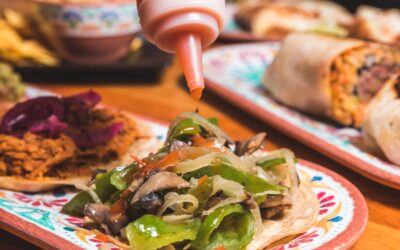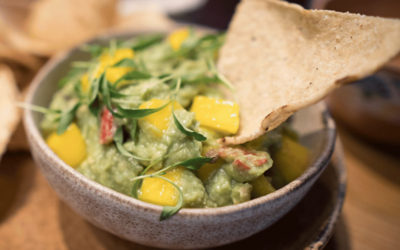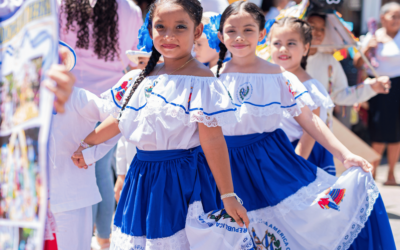History and Culture: The Origins of Our Preferred Mexican Dishes
Mexican cuisine is renowned worldwide for its richness and diversity. It is the result of a long culinary history that dates back to pre-Columbian times. Indigenous, Spanish and other cultural influences have shaped Mexican cuisine as we know it today. Basic ingredients such as corn, beans and peppers are used in many traditional dishes, while unique cooking techniques give Mexican cuisine its distinctive taste.
The precolombian culinary influences
Before the arrival of the Spanish, the indigenous peoples of Mexico had already developed a rich and varied cuisine. They used ingredients such as corn, beans, squash, tomatoes and peppers to create tasty dishes. Corn was especially important in pre-Columbian cuisine, as it was considered a gift from the gods and was used to make bread, tortillas and other staple foods.
Pre-Columbian cooking techniques included steaming, roasting and cooking in clay pots. Food was often seasoned with spices and herbs, such as cocoa, vanilla and annatto. These indigenous influences are still present in modern Mexican cuisine, with dishes such as tamales, enchiladas and pozoles that have pre-Columbian roots.
The arrival of the Spanish and the first culinary exchanges
The arrival of the Spanish in Mexico in the 16th century brought new ingredients and culinary techniques. The Spanish introduced products such as beef, pork, chicken, cheese and wheat, which were quickly adopted by the Mexicans. They also brought spices such as cinnamon, cloves and nutmeg, which enriched Mexican cuisine.
The Spanish also introduced new cooking techniques, such as frying and baking. They also brought products such as olive oil and wine, which have been used in many Mexican dishes. Mexicans have also adapted Spanish ingredients and techniques to their own cuisine, creating new unique flavours and combinations.
The key ingredients of Mexican cuisine
Mexican cuisine uses a variety of key ingredients that give it its distinctive taste. Corn is one of the most important ingredients, used to make tortillas, tamales, enchiladas and many other dishes. Beans are also a staple of Mexican cuisine, often used in soups, stews and side dishes.
Peppers are another essential ingredient in Mexican cuisine, adding warmth and flavor to dishes. The varieties of peppers used vary by region, ranging from mild to extremely strong. Other key ingredients include tomatoes, onions, garlic, avocados, cheese and spices such as cumin, paprika and oregano.
The traditional dishes of Mexican cuisine
Mexican cuisine is famous for its tasty and varied traditional dishes. Tacos are one of Mexico’s most iconic dishes, with a wide variety of toppings such as meat, vegetables, cheese and salsa. Tamales are another traditional dish, made of corn paste filled with meat, cheese or other ingredients, wrapped in corn leaf and steamed.
Mole is a complex and flavorful dish, made from a thick sauce made from peppers, spices, chocolate and other ingredients. Enchiladas are stuffed and rolled tortillas, covered with sauce and cheese. Other traditional Mexican dishes include pozoles (a spicy corn soup), chiles rellenos (stuffed peppers) and ceviches (marinated fish).
Mexican food festivals and celebrations

Cooking plays an important role in Mexican parties and celebrations. The Dia de los Muertos, or Day of the Dead, is a traditional Mexican holiday where families gather to honour their deceased ancestors. Altars are decorated with food offerings, including bread from the dead, tamales and fruit.
Cinco de Mayo is another important celebration in Mexico, commemorating the Mexican victory in the Battle of Puebla against the French. Mexicans celebrate this day with traditional dishes such as tacos, enchiladas and margaritas. Other Mexican food festivals include Independence Day, Carnival and Holy Week.
Regional differences in Mexican cuisine
Mexico is a vast and diverse country, and each region has its own culinary traditions and specialties. For example, the cuisine of northern Mexico is influenced by the proximity of the United States and includes dishes such as burritos, fajitas and chili con carne. Yucatan cuisine in southern Mexico is influenced by Mayan cuisine and uses ingredients such as achiote, habanero and jicama.
The cuisine of Mexico City, the capital of Mexico, is also very varied, with a wide variety of traditional dishes such as tacos al pastor, quesadillas and tamales. Each region has its own specialties and cooking techniques, which makes Mexican cuisine so diverse and exciting.
The impact of Mexican cuisine on international cuisine
Mexican cuisine has had a significant impact on international cuisine, especially in neighboring countries of the United States. Tacos, burritos, enchiladas and nachos have become popular dishes around the world, often adapted to local tastes. Mexican restaurants are also widespread in many countries, offering a variety of traditional and modern Mexican dishes.
The popularity of Mexican cuisine has also led to the incorporation of Mexican ingredients and techniques into other cuisines. For example, guacamole is now a common accompaniment in many international dishes, while Mexican spices such as cumin and paprika are used in dishes around the world.
Mexican dishes famous around the world
Some Mexican dishes have become famous worldwide because of their delicious taste and simplicity. Guacamole is one of these dishes, made from crushed avocados, onions, tomatoes, peppers and lime juice. It is often served with corn chips or used as a topping for tacos and enchiladas.
Fajitas are another popular Mexican dish, consisting of grilled meat, peppers and onions, served with tortillas and toppings such as guacamole and salsa. Quesadillas are tortillas stuffed with cheese and other ingredients, grilled until the cheese melts. These dishes are appreciated worldwide for their simplicity and delicious taste.
The modernization of Mexican cuisine
Mexican cuisine has evolved over time to adapt to modern tastes and trends. Many Mexican chefs began experimenting with international culinary ingredients and techniques, creating a Mexican fusion cuisine. For example, contemporary Mexican cuisine can include Asian, European and American influences, creating new flavours and unique combinations.
The presentation of Mexican dishes has also evolved, with particular attention paid to aesthetics and creativity. High-end restaurants in Mexico often feature artistically presented dishes, highlighting local ingredients and traditional culinary techniques.
The preservation of Mexican culinary culture
Despite the evolution of Mexican cuisine, it is important to preserve Mexico’s unique culinary traditions and ingredients. Many chefs and organizations work to promote traditional Mexican cuisine and support local farmers who grow traditional ingredients such as corn and peppers.
Mexican cuisine is also a UNESCO Intangible Cultural Heritage Site, which highlights its cultural and historical importance. It is essential to preserve these culinary traditions for future generations and to continue to celebrate the richness and diversity of Mexican cuisine.
Mexican cuisine is the result of a long culinary history that dates back to pre-Columbian times. Indigenous, Spanish and other cultural influences have shaped Mexican cuisine as we know it today. Basic ingredients such as corn, beans and peppers are used in many traditional dishes, while unique cooking techniques give Mexican cuisine its distinctive taste.
Mexican cuisine has also had a significant impact on international cuisine, with dishes such as tacos, burritos and guacamole becoming popular around the world. Despite the evolution of Mexican cuisine, it is important to preserve Mexico’s unique culinary traditions and ingredients for future generations. Mexican cuisine continues to evolve and innovate, while remaining true to its cultural and historical roots.




